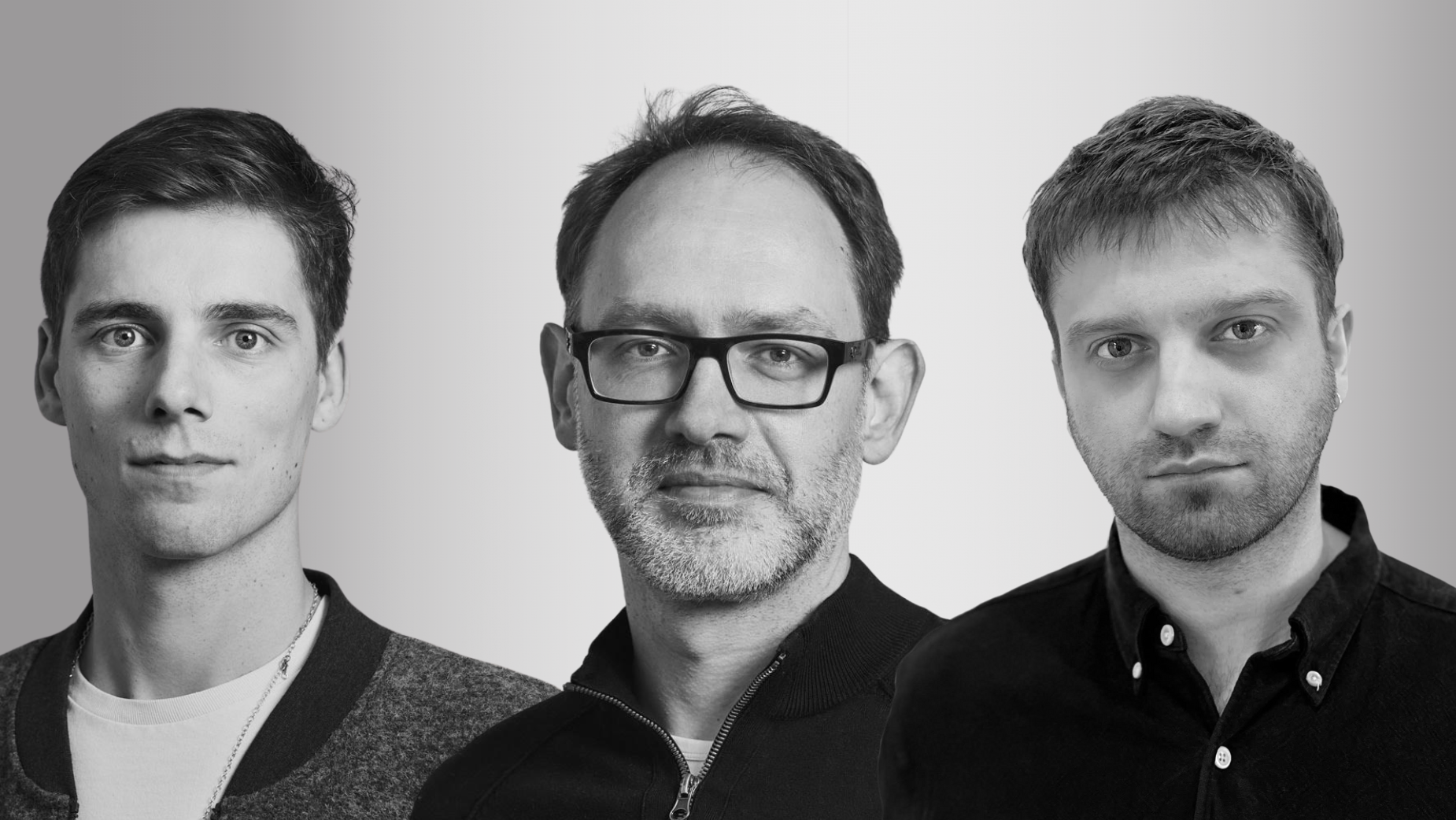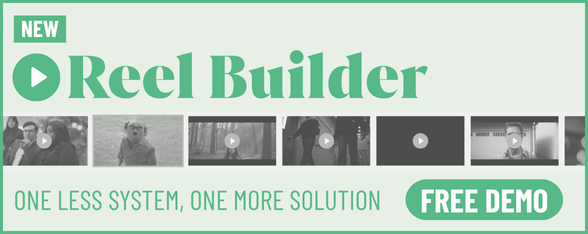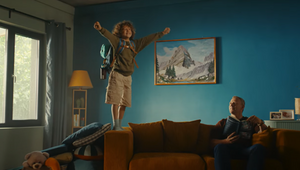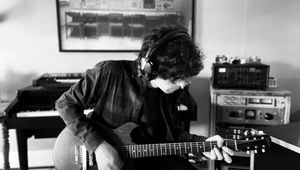
Sonic Waves Unveiled with Soundtree Music

What’s a full-weighted step onto fresh snow if not followed by a heel to toe *crunch*? What’s a kick through a pile of yellowing autumn leaves without the *rustle*? What’s the opening of a can of pop to quench an almighty thirst, without the *pssssssssssccch*? What’s a kiss on your lovers mouth if not followed by the *smack* of pursed lips meeting release?
These experiences are of course, all beautiful in and of themselves. But there is no underestimating what sound can add to a moment. The way it can lift it up and spin it round, enough for it to sparkle.
Soundtree Music knows how important sound is in amplifying any art. Sound designers Graham Norman, Jack Patterson and Henning Knoepfel are experts in crafting work that resonates, and each do so in a way completely unique to them. Each has a different story about how they ended up involved in the work, and are united by the shared belief in how significant sound is in any storytelling pursuit.
In this interview we find out what solidified their passion for sound, the evolution of their style, how they’re utilising AI, and what tracks are blunting their metaphorical needle. It’s full of nuggets that’ll have you nodding your head in agreement, and tilting it in contemplation. We find out how sometimes the best solutions to problems come from outside sources, and why visual media, without sound, is really just a poster.
LBB> Tell us a little bit about yourself and what led to you where you are today.
Graham Norman> Merging my interest in music, recording and technology from an early age it was inevitable I'd end up working in computer audio in some shape or form. Studying audio production paved the way to working with sound for media, my knowledge of recording, both in the field and in-studio enabled me to quickly contribute and work closely with the Soundtree team to create compelling and unique soundtracks.
Jack Patterson> I’m from Perthshire in Scotland and grew up playing in bands in freezing garages at friends houses. After school I went to Falmouth University down in Cornwall (pretty much as far as you can get from Perthshire while still being in the UK) and studied music technology. We did a module in my second year called something like, ‘sound and the moving image’ where we had to take a few minutes of film and recreate all the sounds and I just loved it. After graduating I briefly worked at ENVY before joining Wave Studios back in 2015 as a runner and working my way up to becoming a sound engineer. I first met Henning doing a Dolby mix with him while I was still at Wave and we got on really well. It was interesting to hear from someone who was a sound designer who worked really closely alongside composers, and as someone who loves working with music it sounded really appealing. So, when I was presented with the opportunity to join Soundtree earlier this year, I jumped on it!
Henning Knoepfel> With my young dad being a drummer, my early childhood led me to practising piano and learning music theory. Unfortunately, this did not survive my puberty but my love for music remained, and I discovered the production aspect of it by making German rap music. So in 2000, I came to study audio engineering in London and I met the incredibly gifted Luis Almau studying the same thing. Now, we both are at Soundtree Music working on wonderful projects together, but it took some freelancing for me beforehand to get me where I am today, creatively and technically.
LBB> Can you share a pivotal moment or project in your career that solidified your passion for sound?
Graham> I guess it was quite early in my studies - the realisation that we’re surrounded by an infinite supply of instruments; everything can make a sound and we’re constantly asking ourselves, “what can we do with this object?” For example, recording something like an empty beer barrel scraped against a wooden floor would give me the fundamental material for creating a fire roar for a dragon. Layering and pitching it down, adding distortion, and a sweetener like crisp packet crunches for the crackling of fire. It keeps the process fun and exciting, every brief is a new opportunity to explore.
Jack> Last year I worked on a 30 minute documentary called ‘A Mouthful of Petrol’ by a wicked director called Jess Kohl. It’s a coming of age story about a relationship between a father and son who go banger-racing. It was a really interesting project to work on both narratively and technically.
Henning> I remember my first cinema experience when I was six years old watching ‘Ronia the Robber’s Daughter’ and being freaked out by the raven shrieks as they flew over a castle. Two decades later, I had a similar visceral response to the shrieks of the ringwraiths in ‘Lord of the Rings’ and after watching the DVD’s special feature, and I knew I wanted to do sound for film. It was such an eye opener for me on what is possible in sound design and how to apply it to film.
LBB> How has your approach to sound design evolved since you started at Soundtree?
Graham> Soundtree has a carefully curated approach to everything that comes through the company, from ideation to delivery we’re constantly working together to explore ideas. Having the ability to work so closely with the music department means we are working with the same intention, knowing when music needs to deliver the emotion or when sound needs to realise the picture and accent the drama. It's been a really elevating experience working in this way for me.
Jack> Without doubt, it’s taking on projects with a collaborative approach. At other places I’ve worked people tend to take on a project as a solo endeavour and “own” the work much more. I think what’s so refreshing about Soundtree is from the very beginning of the project we’ll sit down with members from the whole team and discuss how to tackle a job. Then throughout the process we’ll feedback internally and everyone will have an opportunity to express their thoughts on the work. Often the best ideas or solutions to problems come from someone outside the sound team - and why not? We all wear multiple hats and I’ve found it keeps me humble, challenged and most importantly, keeps us honest about what we’re presenting to clients.
Henning> As a sound designer, collaborating and working together with musicians, composers and producers (meaning everybody at Soundtree) under one roof is fantastic. You can instantly share ideas, get feedback on your work and craft a full soundtrack early on. I never need to wait very long for an update on music in order to make informed decisions of how to shape the sound around it. Or I make a first sound pass for the composers, so they know what to hit or stay clear of. In other words, we are not just designing or composing in our own rights but creating a soundtrack together to achieve a complete sonic experience.
LBB> If you could choose one project that you feel represents the pinnacle of your work at Soundtree, what would it be?
Graham> Every project is so very different that no one project can claim that title, but if I had to choose a recent highlight it would have to be the project Henning and I recently won the Gold Kinsale Shark Best in Sound Design award for: BBC News ‘Trust is Earned’.
Billy Boyd Cape along with editor Stephen Dunne had done a fantastic job of gathering archival footage to show the careful and dangerous lengths the BBC journalists go to to verify their stories. Designing a soundtrack that tastefully conveyed this transparency and meticulousness for detail was an inspiring brief and called on many of the skills I've developed in my five years at Soundtree.
Jack> Hard to say as I’ve only been with the team at Soundtree for six months! I think the Postmates job we worked on over the summer really sums up what I was talking about in terms of collaboration between the music and sound teams. From the outside people just see the finished work but there was a real process of refining both sound and music so they worked effectively and harmoniously in those spots. In some ways making both music and sound really shine over six seconds is harder than on a longer film.
Henning> I think this question is impossible for me to answer. If I reached the pinnacle of my work then there would not be room for improvement, experimentation or learning. I am very self-critical and things that I have done and am proud of have been ripped apart or never seen the light of day. We work in a collaborative industry with many cooks and decision makers, so it needs somebody else to judge that. But I do very much like the Postmates spots we recently did for Mother LA.
LBB> How do you think sound contributes to storytelling in visual media?
Graham> Sound is the key to connecting ourselves to the world around us - storytellers have forever used the highly expressive medium of sound to convey the drama of their art to the world.
Jack> It can be everything to a story! Sound can often be a bit of an afterthought which is a shame because it can be so powerful as a narrative tool. I think filmmakers will often have really strong ideas about how music can help tell a story, which is great, but sometimes using sound can convey the same ideas in a more subtle or nuanced way.
Henning> To me, visual media without sound is just a poster. Sound is everything in film because it already works on its own to tell stories; it is called radio! Film without sound on the other hand is very limited narratively and I would consider it surveillance; I hope I do not offend anyone by saying this!
But the most obvious contribution of sound is semantics in the form of spoken words (remember mute films?). It can offer continuity in a world of fast edits and cuts. And it also assists with temporal or spatial information to contextualise a much “bigger picture” than seen on a single frame. Ultimately, never watch a movie without sound! Therefore, I would strongly advocate to re-label the use of the word “film” and change it into “sound film”. But that is not going to happen!
LBB> What trends or future developments in sound design are intriguing you the most?
Graham> The recent developments in AI noise reduction are quite impressive. It certainly speeds up the workflow. I'm looking forward to seeing how DAWs implement these new technologies into the editing workflow.
Jack> This is probably so boring to a non-sound person, but I’m loving some of the AI based audio repair tools out there. We’ve just started using a new plugin called Clear by Supertone, which is basically a super simple dialogue denoiser and it’s amazing. I’ve used products like Izotope RX for years but it takes time to make things work with RX (it’s really easy to be too heavy-handed and make the audio feel artificially treated), but with something like Clear, it’s so user friendly and quick. We’d all rather spend our time in session trying out interesting ideas rather than removing background noise from a shoot!
Henning> AI is obviously a main headline these days and it has already helped with our audio productions on many occasions, e.g. voice generators or audio restorations. I think it is terrific to say the least, but I do not believe (yet) that it will replace a creative mind or the listening skills of a musician or mix engineer. Plus, you cannot go for dinner or a beer with AI - you need to be thirsty and hungry in the first place.
LBB> Can you tell us a bit about something exciting you’re working on at the moment?
Graham> With NDAs it's difficult to discuss current projects but we have just opened up a new Studio in LA where Pete Raeburn, Soundtree’s founder, is developing our team and building on Soundtree’s international presence, so many exciting things to come!
Jack> We’re currently working on a couple of really cool projects that really blend sound and music together. For me this was one of the most exciting things about joining Soundtree: getting to work alongside the composers to make the sound and music work harmoniously. One of these projects features a major athlete which is going to have a really nice mix of intense “sport” sounds and ethereal music and getting that to work is a real challenge. Another ongoing project for a charity has the sound design really playing with the music track. We’ve been handing over tracklay of spot FX to the composers to chop up and use percussively in their music pass.
Henning> We are currently working on an exciting short promo that features a flying bio-metal alien which of course needs a movement as well as a vocalisation sound. To me, creature vocalisation is the most challenging aspect in sound design. It takes a long time to craft and getting the emotions and physics right is very tricky to say the least. And it needs to be liked by the director! To see and hear a character on screen that otherwise does not exist in this world. To create a sound that is expressive and believable can be the most rewarding thing.
LBB> If you had the record, what track at the moment would be blunting the needle?
Graham> Currently back to ‘Spirit of Eden’ on rotation. Sonic bliss.
Jack> I checked my Spotify Wrapped for this question and I can confirm that I’ve listened to ‘Hygiene’ by Drug Church many, many, many times over the past few months. There isn’t a single track from the album that I’d pick, but I listen to it when I’m running and at 25 minutes it’s just a perfect length album for a 5k!
Henning> Pete Rock and CL Smooth ‘The Main Ingredient.’















